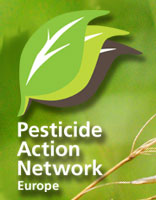New elements of Regulation 1107/2009 and its implementation
PAN-Europe has been actively lobbying the development of the new Pesticides legislation (Regulation 1107/2009) for many years and is looking forward to see the changes in the approval of pesticides on European level and the Authorisation on national level (in zones) realised in practice. The changes will however be challenged again in the implementation phase by commercially interested parties and PAN-Europe needs to be there to help fully implementing the Regulation and acting as a watchdog to prevent delay, misinterpretation and new backdoors. The main topics for the implementation of the Regulation are:
- The use of the “cut-off” criteria for banning the most hazardous pesticides (carcinogenic, mutagenic, toxic for reproduction, endocrine disrupting pesticides). Sweden produced already a list of pesticides which meet these criteria
- The criteria for endocrine disrupting pesticides. Commission has to come up with a proposal by end 2013 for these criteria. These criteria could also be used for the chemicals at large (REACH). Commercial interested parties already organised several ‘scientific’ meetings to play down the criteria for endocrine disruption.
- The use of science. One main provision in the new Regulation is the obligation to use open peer-reviewed scientific literature in decision taking. In the past the decision were largely based on industry tests. This will have to change.
- The candidates of substitution. Commission has to present a list of harmful pesticides which do not meet the standards of the ‘cut-off’ principle, but still very harmful. EU member states will have to substitute the pesticides placed on this list by other methods or chemicals if feasible (comparative risk assessment).
- Combination toxicity. In decision taking the effects of combinations of pesticides (addition, synergy) have to be taken into account. EFSA plays an important role in defining methods. The process is slow. PAN-member Natuur en Milieu already in 2002 published a method to account for addition effects of organophosphates.
- Zonal authorisation and mutual recognition. Europe is divided in three zones and authorisations will take place in one zone, in one member state, while the other have to recognise the authorisation. Ao. ‘shopping’ of industrial applicants for the ‘weakest’ country needs to be prevented.
Useful information



